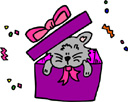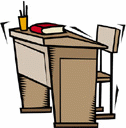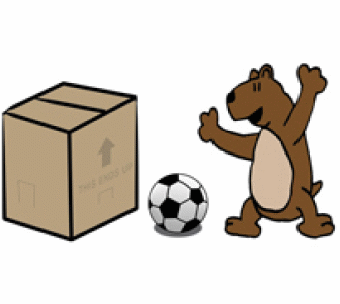16/07/2013
Eliana Dias e Lazuíta Goretti de Oliveira
| Modalidade / Nível de Ensino | Componente Curricular | Tema |
|---|---|---|
| Ensino Médio | Língua Estrangeira | Compreensão oral |
| Ensino Fundamental Final | Língua Estrangeira | Aspectos morfológicos, sintáticos e fonológicos |
| Ensino Médio | Língua Estrangeira | Produção oral |
| Ensino Médio | Língua Estrangeira | Competência comunicativa: componentes linguísticos, sociolinguísticos e pragmáticos |
| Ensino Médio | Língua Estrangeira | Produção escrita |
| Ensino Médio | Língua Estrangeira | Compreensão leitora |
O que o aluno poderá aprender com esta aula
descrever um quarto;
utilizar-se da estrutura do verbo there to be (há);
utilizar-se do vocabulário relacionado a objetos encontrados em um quarto;
fazer uso das preposições de lugares para descrição de quartos.
Duração das atividades
Conhecimentos prévios trabalhados pelo professor com o aluno
Não há necessidade de conhecimento prévio, uma vez que o conteúdo a ser trabalhado é de nível básico e introdutório.
Estratégias e recursos da aula
- material impresso/xerocado;
- laboratório de informática com acesso a internet;
- notebooks, tablets, vídeos, slides, sites.
MÓDULO 1
First step (primeiro momento): Apresentando vocabulário relacionado a um quarto
Professor, introduza a aula mostrando um slide encontrado no site: http://www.slideshare.net/leihun5744/things-in-bedroom (acesso em 30.06.2013), que contém objetos e móveis de um quarto. Com o uso do slide, o professor poderá introduzir o vocabulário, assim como trabalhar a pronúncia das palavras.
# Vocabulário introduzido no slide: bed, bookshelf, clock, chair, curtain, desk and chair, floormat, mirror, picture, table lamp, wardrobe, window.
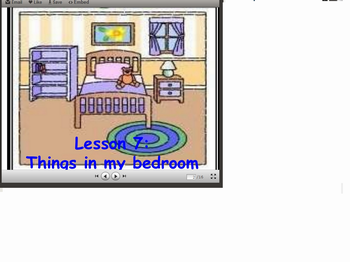
Figura ilustrativa do referido site http://www.slideshare.net/leihun5744/things-in-bedroom.
Em seguida, reforce o vocabulário aprendido e introduza outras palavras com o seguinte exercício:
1) Look at the following picture and write the corresponding word next to the number. You can use the list of vocabulary in the box:
| wall paper bed pillow picture wardrobe window vase with plant rug aquarium comforter/blanket bedside table drawers table lamp |
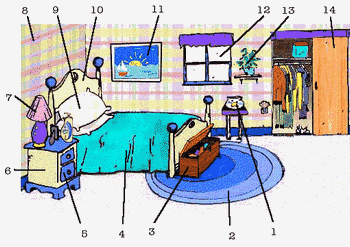
1.____________ 2._________________; 3._____________; 4._______________; 5.___________;
6.____________; 7._________________; 8.____________; 9._______________; 10.___________;
11.__________; 12.________________; 13.____________; 14._____________
# A correção poderá ser feita de forma oral, proporcionando a participação de todo o grupo. A fim de que pratiquem a pronúncia das palavras, peça para que as repitam.
2) Game: BINGO
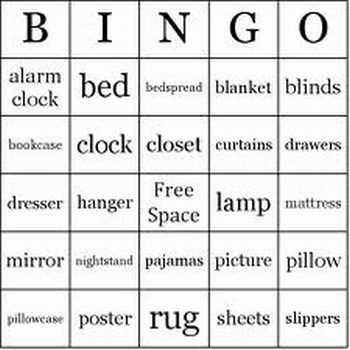
Second step (segundo momento): Trabalhando com as preposições de lugares
3) Introduza as preposições de lugares, projetando no datashow a seguinte explicação:
In general, we use:
- at for a POINT
- in for an ENCLOSED SPACE
- on for a SURFACE
| at | in | on |
| POINT | ENCLOSED SPACE | SURFACE |
| at the corner | in the garden | on the wall |
| at the bus stop | in London | on the ceiling |
| at the door | in France | on the door |
| at the top of the page | in a box | on the cover |
| at the end of the road | in my pocket | on the floor |
| at the entrance | in my wallet | on the carpet |
| at the crossroads | in a building | on the menu |
| at the front desk | in a car | on a page |
Look at these examples:
- Jane is waiting for you at the bus stop.
- The shop is at the end of the street.
- My plane stopped at Dubai and Hanoi and arrived in Bangkok two hours late.
- When will you arrive at the office?
- Do you work in an office?
- I have a meeting in New York.
- Do you live in Japan?
- Jupiter is in the Solar System.
- The author's name is on the cover of the book.
- There are no prices on this menu.
- You are standing on my foot.
- There was a "no smoking" sign on the wall.
- I live on the 7th floor at 21 Oxford Street in London.
Notice the use of the prepositions of place at, in and on in these standard expressions:
| at | in | on |
| at home | in a car | on a bus |
| at work | in a taxi | on a train |
| at school | in a helicopter | on a plane |
| at university | in a boat | on a ship |
| at college | in a lift (elevator) | on a bicycle, on a motorbike |
| at the top | in the newspaper | on a horse, on an elephant |
| at the bottom | in the sky | on the radio, on television |
| at the side | in a row | on the left, on the right |
| at reception | in Oxford Street | on the way |
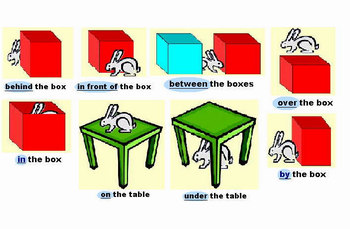
 The pen is betweenonunderin front ofbehindnearin the notebook. The pen is betweenonunderin front ofbehindnearin the notebook.
|
 The red ball is onnearunderbetweenin front ofbehindin the dog. The red ball is onnearunderbetweenin front ofbehindin the dog. |
 The brown dog is in front ofonundernearinbetweenbehind the box. The brown dog is in front ofonundernearinbetweenbehind the box.

|
  The panda is nearoninunderbetweenin front ofbehind the lamps. The panda is nearoninunderbetweenin front ofbehind the lamps.
|
 The apple is inonunderbetweenin front ofbehindnear the book and the pen. The apple is inonunderbetweenin front ofbehindnear the book and the pen. |
  The gray cat is in front ofonundernearinbetweenbehind the purple box. The gray cat is in front ofonundernearinbetweenbehind the purple box.
|
 The pupil is betweeninonin front ofbehindundernear the door. The pupil is betweeninonin front ofbehindundernear the door. |
  The presents are in front ofinnearonunderbetweenbehind the table. The presents are in front ofinnearonunderbetweenbehind the table. |
| |
|
 The pencil is betweeninonunderin front of the big red apple. The pencil is betweeninonunderin front of the big red apple. |
  The girl is reading in front ofinnearonunderbetweenbehind the chair. The girl is reading in front ofinnearonunderbetweenbehind the chair. |
 The chair is oninnearunderbetween the desk. The chair is oninnearunderbetween the desk.
|
  My brother is sitting nearbetweenin front ofbehindonunderin the computer. My brother is sitting nearbetweenin front ofbehindonunderin the computer. |
 The ball is onin front ofbetweenunderinnearbehind the box and the bear. The ball is onin front ofbetweenunderinnearbehind the box and the bear.
|
  Three pencils are inunderbehindonin front ofnearbetween the pencil box. Three pencils are inunderbehindonin front ofnearbetween the pencil box.

|
Módulo 2
First step: There to be
There is and there are means something exists.
There is
Use "there is" (there's) for a noun - singular.
| Example:
There is a mouse in the bag. |
There are
Use "there are" for a noun - plural.
| Example:
There are four girls in a team. |
There is = there's
The contraction of there is is there's.
There is no short form for there are!
Negative form of "there is" and "there are"
| Examples:
There is a car. There are four balls. |
There isn't a car. There aren't four balls. |
Place there is and there are at the start of a sentence.
Questions with there is and there are
Place is or are in front of there to form a question.
| Examples:
There is a book on the table. Is there a book on the table?
There are books on the table. Are there books on the table? |
Fonte: http://first-english.org/english_learning/english_beginners/there_is_there_are/00_there_is_there_arel_grammar_rules.htm (acesso em 30.06.2013)
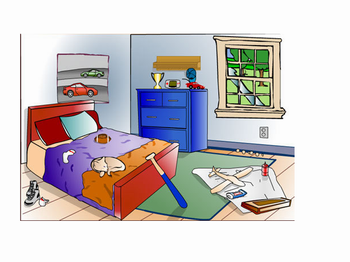
The wardrobe is on the left and my bed is on the right. There is a computer on the table and books, pens and cds are near the computer. There is a magazine and a camera on the bed.
http://www.uhu.es/antonia.dominguez/virtualwriting/descplaces.htm (acesso em 30.06.2013)
# Professor, avalie essa atividade segundo o capricho do desenho e a exatidão das frases elaboradas a partir das informações contidas no texto. Compartilhe o desenho de cada aluno com os demais, elegendo o mais caprichado e organizando um mural, onde todos os desenhos poderão ficar expostos.
8) Look at the picture and choose the right sentence.
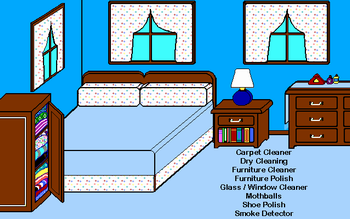
1. There is a big bed There is a small bed.
2. There is one picture. There are three pictures.
3. There is an old chair. There isn´t an old chair.
4. There is a bookase in the corner My room has got a window.
5. The desk is on the left. I have not got a desk.
6. There are a lot of books in the bookcase. There is a lot of books in the bookcase.
Fonte: http://www.uhu.es/antonia.dominguez/virtualwriting/descplaces.htm (acesso em 30.06.2013)
Recursos Complementares
Para mais imagens que proporcionam a introdução e a prática de vocabulário relacionado a quarto, acessar o link:
http://www.google.com.br/search?=things+in+a+bedroom&tbm=isch&tbo=u&source=univ&sa=X&ei=O5fQUeHTI_io4AO91IBI&sqi=2&ved=0CCoQsAQ&biw=1024&bih=643 (acesso em 30.06.2013)
http://www.learnenglish.de/vocabulary/roomsbedroom.htm (acesso em 30.06.2013)
Para slides com figuras e imagens de quartos, acessar o site:
http://www.slideshare.net/leihun5744/things-in-bedroom (acesso em 30.06.2013)
Para um 'vocabulary and a practice quiz', acesse o site:
http://www.learnenglishfeelgood.com/vocabulary/esl-pictures-bedroom1.html (acesso em 30.06.2013)
Para um vídeo com as preposições, acessar:
http://www.englishexercises.org/makeagame/viewgame.asp?id=597 (acesso em 30.06.2013)
Avaliação
O professor deverá pedir para que os alunos desenhem os seus próprios quartos e elaborem frases com o vocabulário e as estruturas gramaticais aprendidas na aula. O professor avaliará o desempenho dos alunos com as frases elaboradas, o capricho com o desenho, como, também, o envolvimento dos alunos com todas as atividades desenvolvidas durante a aula.
Quatro estrelas 2 classificações
- Cinco estrelas 0/2 - 0%
- Quatro estrelas 2/2 - 100%
- Três estrelas 0/2 - 0%
- Duas estrelas 0/2 - 0%
- Uma estrela 0/2 - 0%
Denuncie opiniões ou materiais indevidos!
Opiniões
-
Rawlian Castro Alves Leonel, EEEFM JAYME PEIXOTO DE ALENCAR , Rondônia - disse:
rayleonel@hotmail.com14/08/2013
Quatro estrelasGostei muito das atividades. Parabéns!
-
Mario luis calixto da silva, ANTONIO AGGIO , São Paulo - disse:
marioluiscalixto@ig.com.br28/07/2013
Quatro estrelasGostei do modo que foi articulado a atividade parabéns. Mario
- Sugestão de aula
- Aulas
- Coleções de aulas
- Criar aula
- Criar individual
- Criar em equipe
- Gerenciar equipes
- Minhas aulas
- Orientações
- Criando equipes
- Dicas para a produção de aulas
- Reflexões pedagógicas
- Utilizando a ferramenta
- Artigo: portal educacional
- Estatísticas de uso do Portal
- Estatísticas de aulas
- Estatísticas de recursos
- Estatísticas de visitas
- Recursos utilizados em aulas
- Reflexões pedagógicas
- Informações de cursos
- Cursos
- e-Proinfo
- Materiais de cursos
- Materiais de estudo
- Artigos e publicações
- Assuntos relevantes
- Avaliações
- Ciência do cotidiano
- Destaques internacionais
- Dicas práticas
- Educação profissional e tecnológica
- Entrevistas
- Estratégias pedagógicas
- Inovações tecnológicas
- Materiais de cursos
- Materiais de evento
- Orientações e diretrizes
- Parâmetros e referencias
- Programas em vídeos
- Tutoriais
- TVescola
- Ferramentas do portal
- Fórum
- Portal do Youtube
- Compartilhando apresentação
- Ferramentas pela internet
- Blog
- Compartilhe vídeos
- Comunicação on-line
- Crie e compartilhe apresentações
- Edite e compartilhe fotos
- Escrita colaborativa
- Junte-se a uma comunicade
- Lista de discussão
- Organize e compartilhe favoritos
- Podcast
- Rádio/TVs Universitárias e outros
- Redes Sociais
- Robô Ed
PLATAFORMA FREIRE
- Bibliotecas
- Capacitação Proinfo Integrado
- Cultura
- Dicionários, tradutores e enciclopédias
- Educação inclusiva
- Geoprocessamentos
- Inclusão digital
- Infográficos
- Jogos educativos
- Jornais
- Museus
- Observatórios e planetários
- Organizações governamentais
- Plataformas educacionais
- Portais educacionais e outros
- Portal MEC
- Prêmio professores do Brasil
- Produções de professores
- Projetos de escolas
- Projetos inovadores
- Projetos sociais e educacionais
- Rádio escola
- Recursos digitais
- Revistas
- Sites de busca
- Sites temáticos do portal e TVescola
- Softwares de edição e outros
- Softwares educacionais
- Um computador por aluno

- Ryan Oksenhorn
- Ryan Snow
- Sergio Caldara
- Shane Miler
- Shane Herzog
- Sotirios Papavasilopoulos
- Stephen JB Thomas
- Tarah
- Valera Nazarov
- ZbigniewMa K Flakus







